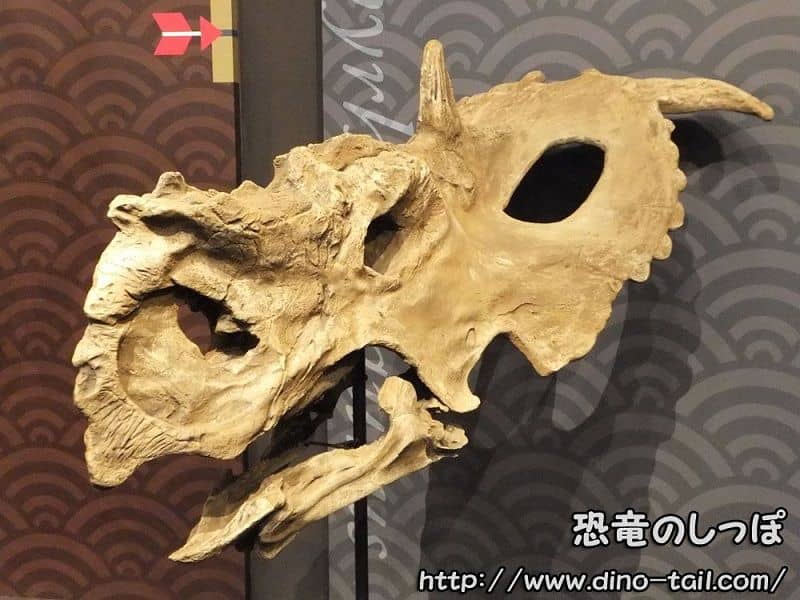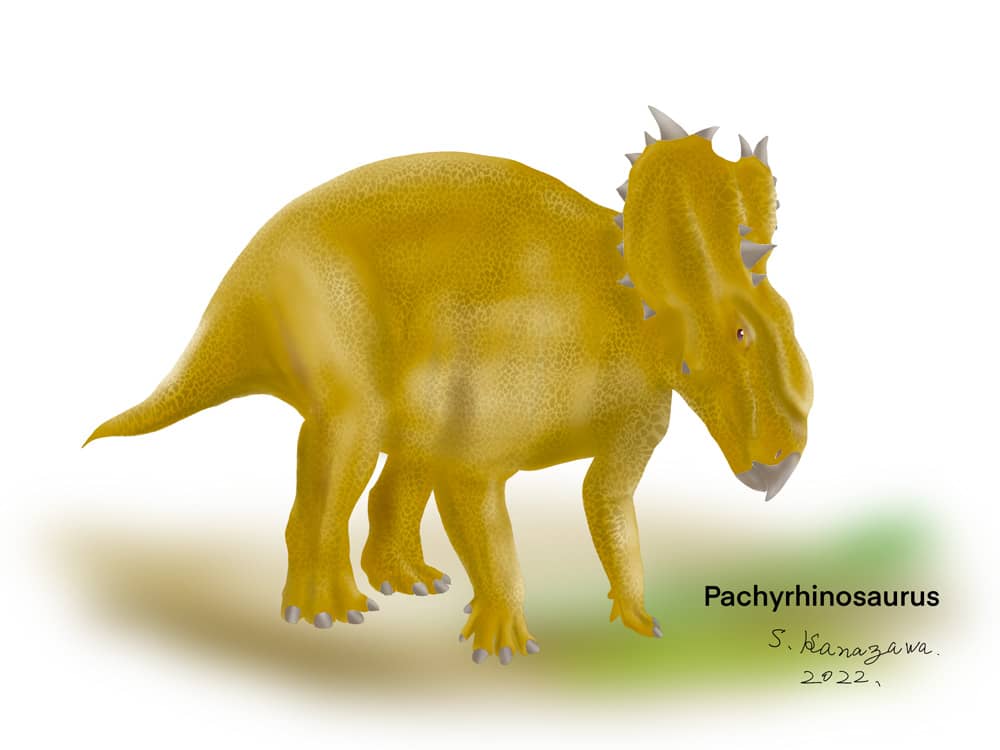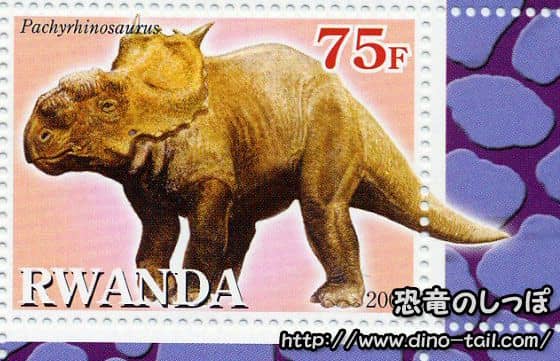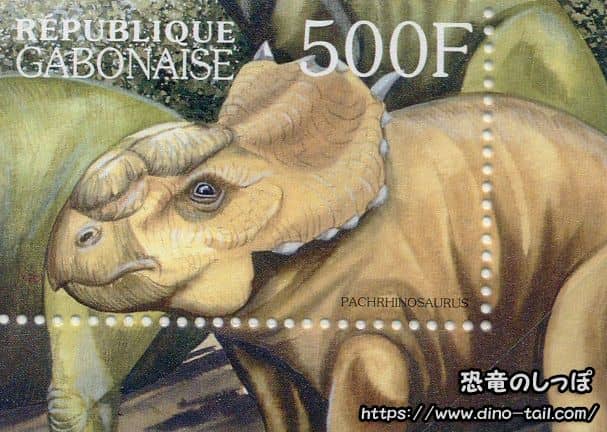About Pachyrhinosaurus
| Scientific Name (Genus) | Pachyrhinosaurus |
| Meaning of Name |
Thick-nosed lizard
pachys (thick) [Greek] - rhino (nose) [Greek] - saurus (lizard) [Greek] |
| Classification | Ornithischia, Marginocephalia (Ceratopsia, Ceratopsidae, Centrosaurinae) |
| Total Length | Approx. 5 - 8m |
| Diet | Herbivorous |
| Period | Late Cretaceous |
| Species |
Pachyrhinosaurus canadensis
Pachyrhinosaurus lakustai Pachyrhinosaurus perotorum |
| Year of Paper Publication | 1950 |
| Genus Name Publication |
Pachyrhinosaurus canadensis, representing a new family of the Ceratopsia, from southern Alberta.
National Museum of Canada Bulletin. 118. by Charles Mortram Sternberg. 1950. |
Features
The most distinctive feature of Pachyrhinosaurus is the thick, bumpy boss on its nose.
It is located exactly where many other ceratopsians have horns.

The exact function of this thick boss is a matter of debate, but the texture of the bone surface makes it certain that it was covered by a sturdy keratinous sheath in life. The main proposed functions are as follows:
- Weapon for shoving matches: Like modern muskoxen, males may have used it as a weapon to compare strength in contests for rank, without causing serious injury.
- Base for a giant horn: The bony boss may have been the base for a giant keratinous horn that was not preserved in the fossil record. This horn could have been used for display or as a weapon.
- Species recognition and display: Since the shape of the boss and the horns on the frill differ among the three species, it was undoubtedly an important visual cue for identifying members of their own species and for attracting mates.
At the back of the frill, there is a short projection extending from the middle and a longer projection extending outward.
Evolution in Sequence: From Horn to Boss

One of the most interesting aspects of Pachyrhinosaurus is that its evolutionary history from its ancestors is very clearly preserved in the fossil record. Its relatives have been discovered in sequence from different geological strata in North America, like a time-lapse capturing the moment of evolution.
- Einiosaurus: The oldest ancestor. It had a strange, large, forward-curving horn on its nose.
- Achelousaurus: The next in line. The nasal horn was lost and replaced by a rough, bony boss similar to that of Pachyrhinosaurus.
- Pachyrhinosaurus: The most recent relative. The boss on its nose is even larger and more complex in shape.
This series of fossil records is considered direct evidence of the evolution of a lineage of centrosaurines over millions of years, dramatically changing their facial ornamentation used for display and combat from 'horns' to 'bosses.'
Communal Living in Cold Lands
The fact that Pachyrhinosaurus lived in large herds is strongly suggested by multiple fossil sites. In addition to the bonebeds in Alaska, a huge bonebed has been discovered at Pipestone Creek in Alberta, Canada, where it is believed that several thousand Pachyrhinosaurus ( P. lakustai ) died at once due to a sudden disaster such as a flood. This site contained individuals of all ages, from juveniles to adults.

During the Late Cretaceous, the Brooks Range was as high as 6,000 meters in some places. This land, located in the Arctic Circle, would have been covered in thick ice during the winter.
The image of Pachyrhinosaurus migrating in herds across Alaska at the end of the Cretaceous period, about 70 million years ago, was depicted in the 2013 British-American-Australian co-production film 'Walking with Dinosaurs.'
Discovery and Description Paper
In 1945-1946, a skull fossil was excavated from the Horseshoe Canyon Formation in Alberta, Canada. In the following years, fossils of the same species were also found in the St. Mary River Formation in Alberta. In 1950, the new genus and species Pachyrhinosaurus canadensis was described by the American-Canadian paleontologist Charles Mortram Sternberg.
Radiometric dating has determined that the Horseshoe Canyon Formation is between 74 and 67 million years old, and it is known that this area had a humid, subtropical climate with wetlands and floodplains at that time.
Pachyrhinosaurus, which has been found in both the cold regions mentioned earlier and in subtropical climates, is thought to have migrated over a wide range according to the seasons, much like modern migratory birds.
Pachyrhinosaurus Stamp & Fossil Gallery


